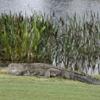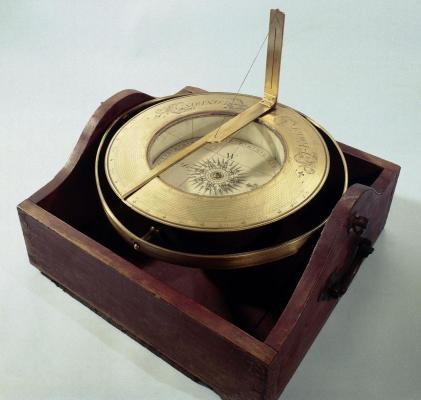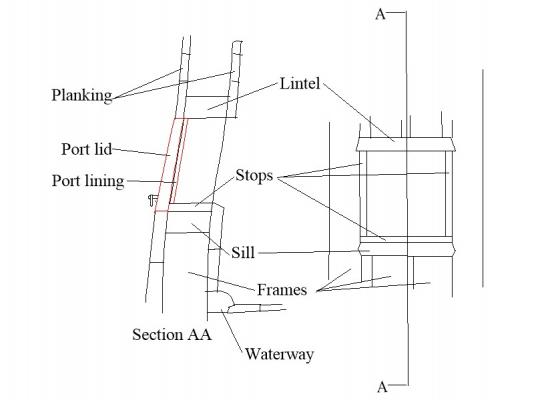-
Posts
8,149 -
Joined
-
Last visited
Content Type
Profiles
Forums
Gallery
Events
Everything posted by allanyed
-
Giorgio, My copy of the SAME BOOK arrived this past Monday!!!! Che coincendenza! I found it on line for US$6. I am experimenting again with making blocks with internal strops. The method seems to be very good for large sizes, and OK for small (1/8") blocks. If I can perfect it a little I will take photos and post. Ciao Allan
-
Ciao Giorgio Finally went through your entire building log. Well Done!!!! What are you using for rigging plans, including block and rope sizes and belaying points? This is always a sore point with me as I cannot find a really good single source. Chappelle has several Gloucester vessels' block lists, and most plans have sail plans, but I have not found a good set of drawings showing the run of the lines right down to the belaying points. Chappelle is a huge help, but a royal pain to use as each chapter is alphabetical from anchor to windlass. Even with the many great details he shows, it is not complete as far as rigging. Ciao Allan
-

Gluing planking
allanyed replied to DocBlake's topic in Building, Framing, Planking and plating a ships hull and deck
To add a bit more, when spiled and pre-bent to the approximate bend of the hull shape, the planks will stay in place using any aliphatic (carpenter's) glue after a minute or less of holding it in place tight against the bulkheads and adjacent plank with light finger pressure. The planks were normally about 30 feet long so even at 1/4 inch scale that is only about 8 inches long. PVA glues such as Elmer's white glue is not a great way to go for planking, in my personal experience. Don't forget to bevel the edges of the planks as needed, both for inside bends such as near the stern and outside bends elsewhere. I know "as needed" is not very definitive, but the amount of bevel varies along the length of the plank as the curves of the frames are dynamic. I also agree with Duff that trennals are great for added strength, especially using bamboo, but tough to make to scale below 3/16". Allan -
Wes Please keep in mind I was referring to contemporary drawings that we had purchased from the NMM, not modern drawings. If we had only had "modern" drawings we probably would have defaulted to the original contract, then the tables, and probably not considered the drawings very much for dimensions, Allan
-
JCF, Thanks for the reply, much appreciated. Chuck, Brass shim stock can be found down to 0.001 at McMaster Carr, (and probably some other places.) I think they still have one of their DCs not far from Exit 8A off the NJTP so could be will called or at your shop in a day or 2 if shipped. Allan
-
Wes, I have absolutely no experience with US ships other than Gloucester schooners so cannot comment with any authority.. I suspect, there were ship designers and shipwrights from England or trained by British designers and builders, thus may have followed practices from England. If that is the case, I don't think you would be far off in using the scantlings in the book. Keep in mind, if you look at contemporary drawings of British ships, there may be differences in the drawings from the scantlings, including Establishment scantlings. When Wayne Kempson and I worked on the Euryalus project he was continually finding differences in the scantlings between the drawings, the contract, and Steel. We defaulted to the drawings, then the contract, then the scantlings in the tables. The differences were minimal and hardly noticeable, if at all, in a model, but there were differences to be sure. I know this is not really answering your question, but I would feel safe using the scantlings Allan
-
Russ, Very nice! JCF, the time to make these is indeed long, but not the problem. Making them so they are consistent in appearance across 50 to 100 blocks is my problem. I am looking for ideas that others may have tried and wound up with blocks that looked as they should, even at the smallest sizes. Chuck, couple months probably. Thanks to all Allan
-

Crows nest/cross trees 18th Century Brig
allanyed replied to Rick01's topic in Masting, rigging and sails
Rick I do not know about Australian but they may well have followed British building guidelines at that time. According to James Lees, for British ships, for the main and fore masts from 1670 to 1773, 15/16 inch per 3 feet in length. For the main and fore masts from 1773 to 1794, 9/10 inch per 3 feet in length. After that, 1 inch per 3 feet in length. For the Mizzen, from 1670 to 1711 15/16" per 3 feet of length, from 1711 to 1719 2/3 inch per 3 feet in length, 1719 depends on rate. Fifth rates for examples 2/3 inch per 3 feet in length, on 6th rates, 8/13" per 3 feet in length. 1773 - 6/9 " per 3 feet. Lengths are determined in a more complex way, described in detail on page 183 in Lees Masting and Rigging. He gives formulas for the upper masts as well as spars. Allan -
Hi Russ The current build of the Effie M. Morrissey /Ernestina is 1/4" scale. The blocks range from 5" to 12" (just under 1/8" to 1/4" long shells.) Most are singles and doubles with a couple triples in the largest sizes. I have recently written to the Ernestina.Org group and hope to hear from them on rigging sizes, but in the meantime I am using the list of blocks from Chappelle for the Columbia as a guide. Allan
-
I have made blocks with internal iron strops a number of times but am not really satisfied with any of the methods tried, especially when making the smallest ones. I have made them using laminations with the strop laid in, that being close to the method used in full size, and from solid pieces drilled to take the strop on each side of the sheave opening(s). I have drilled in the top (and bottom when needed) to take an eye which is totally wrong but passable at the smallest sizes once the eye is shaped a bit so as to not be round, but rather u-shaped or triangular. If anyone out there has a favorite method that yields excellent looking internally stropped blocks that they would like to share, I am all ears and eyes. Thanks in advance. Allan
-

Tool for Shaping Brass Strip
allanyed replied to mikiek's topic in Metal Work, Soldering and Metal Fittings
John, Very nice metal work indeed. What vessel and scale? Thanks Allan -
About time!!!!! I am very happy to see this log, and, using methods I had not seen in your past work. Allan
- 641 replies
-
- greenwich hospital
- barge
-
(and 1 more)
Tagged with:
-

To spile or not to spile...
allanyed replied to fish's topic in Building, Framing, Planking and plating a ships hull and deck
It is so good to see these posts from those that have tried spiling and have become converts. There are a lot of posts on clamps for planking but a properly spiled plank can be soaked and pre-bent and, once dried by whatever means is chosen, it can be held in place with finger pressure for a minute or less using an aliphatic (carpenter's) glue. Druxey converted me years ago and I have been happy that he did so. No pin holes and no clamp dings, especially when using softer species of wood. I do use clamps for many things, but rarely for planking. Allan -
Arch I did a quick search of contemporary models and I cannot find any gun ports with stops on the lintels. The only definitive one I have found so far is in the forum here for contemporary model photos from museums that being the George, DCSO1822 and it shows no top stop. This is only one model, so maybe it is wrong or maybe some had them and some did not. Could you post a photo or two of the contemporary models that you have seen that have these, I am really curious about this. Seems there is always something to ponder. Thanks very much Allan
-

What thickness rigging cord do I need?
allanyed replied to Moxis's topic in Masting, rigging and sails
In addition to Steel, Lees Masting and Rigging is also a consideration as he makes mention that all line sizes are appropriate for all rates for all time periods in the book which is a little before 1891 for Clara May. With only a few exceptions such as ratlines and brails which are pointed out with given dimensions, the line sizes are given as circumferences and are proportional based on the size of the appropriate mast stay and these were found in comparison to the lower stays which in turn are given in ratio size compared to the lower masts. While this may seem daunting it is easy to get the hang of it quickly. I rarely rig, but when I have done so, I do all the calculations and write them down then write the scale size circumference then calculate the diameter. That was I have an idea on what line sizes Iwill need and how much of each. Note that you will not be able to get exact scale circumferences/diameters as there are only so many line sizes that can be purchased, but will be close. Allan -
As always, a joy to watch your work, especially the detailing. As said above, nice selection of wood, it makes the model quite rich looking. Allan
- 268 replies
-
Small and relatively tidy ships often turn out to be the subject of the most beautiful models. You are proving that with your build. Allan
-
Sorry for the very late reply, been moving the past few weeks. Maybe I have missed something here, but you do not need anything more than very thin hand files and an old hacksaw blade or stiff backed razor to make molding cutters. Even better I have used thin cutting wheels with my lathe or my Dremel, Hold the metal piece in a vice and cut or file the reverse image of what the molding is look like. If using a hack saw blade piece heat it to cherry red and let it cool and it will be soft enough to easily file. No need to re-harden, but if you wish to do so, reheat to cherry red and quench in oil. Allan
-

THE 74-GUN SHIP by Jeronimo
allanyed replied to Jeronimo's topic in - Build logs for subjects built 1751 - 1800
I agree with David B, The straight edge on what looks like double sided tape is something for me to remember to try. The photography as pointed out earlier is excellent. Thanks for continuing to share. Allan- 194 replies
-

Gunpowder Kegs
allanyed replied to DocBlake's topic in Discussion for a Ship's Deck Furniture, Guns, boats and other Fittings
Did a few minutes looking up withy. All the definitions I found say withy was made of osier or other types of willow branches. Can't wait for the Jeopardy game show to have powder kegs as a category and a clue on withy. I am sure that will finally be one in which I can beat the admiral..... Allan -
Price, How do you do. Rendered collagen from animal hides and hooves was the bond most likely originally used on those classic models we see in the museums as well as furniture and other wood projects. I understand that it is still used in some instrument making and antique repairs, so it must be available if you want to give it a try. Fortunately we have other choices today, as using glue from hides is difficult, smells bad, and the animal rights people would no doubt harass you and this site if you used it. As an aside, I wonder if vegans refuse to sit on antique chairs or play a violin, hmmmmm. Aliphatic emulsion resins (yellow carpenter's glue) is my choice for wood, and I use polyvinyl acetate (white glue) at times when setting seizings and such in rigging. Epoxy certainly has an important place especially for metal to wood or similar situations. Some folks like cyanoacrylate glue, but this is not my choice, normally. Once in a while I use it as a cheater bond to hold tricky piece of wood in place while the aliphatic glue cures. Allan
-

HMS Naiad 1797 by albert - FINISHED - 1/48
allanyed replied to albert's topic in - Build logs for subjects built 1751 - 1800
Albert Just checked into your log. REALLY GREAT! Allan
About us
Modelshipworld - Advancing Ship Modeling through Research
SSL Secured
Your security is important for us so this Website is SSL-Secured
NRG Mailing Address
Nautical Research Guild
237 South Lincoln Street
Westmont IL, 60559-1917
Model Ship World ® and the MSW logo are Registered Trademarks, and belong to the Nautical Research Guild (United States Patent and Trademark Office: No. 6,929,264 & No. 6,929,274, registered Dec. 20, 2022)
Helpful Links
About the NRG
If you enjoy building ship models that are historically accurate as well as beautiful, then The Nautical Research Guild (NRG) is just right for you.
The Guild is a non-profit educational organization whose mission is to “Advance Ship Modeling Through Research”. We provide support to our members in their efforts to raise the quality of their model ships.
The Nautical Research Guild has published our world-renowned quarterly magazine, The Nautical Research Journal, since 1955. The pages of the Journal are full of articles by accomplished ship modelers who show you how they create those exquisite details on their models, and by maritime historians who show you the correct details to build. The Journal is available in both print and digital editions. Go to the NRG web site (www.thenrg.org) to download a complimentary digital copy of the Journal. The NRG also publishes plan sets, books and compilations of back issues of the Journal and the former Ships in Scale and Model Ship Builder magazines.




